One Man's Lasting Legacy
Introduction
Text-to-speech Audio
Stephen Girard (1750-1831), the founder of Girard College is interred, in this marble sarcophagus. The first American multi-millionaire, Girard made his fortune in shipping, banking, and real estate and in his lifetime he had a great impact on both Philadelphia and the nation through his work and through specific actions such as battling the Philadelphia flu epidemic in 1793 and providing a major loan to the U.S. government during the War of 1812. After his death, his will left $6 million to establish a residential school for poor, white, orphaned boys ages 6-18. This bequest was the largest philanthropic gift in American history to that point. Girard College opened in 1848 with around 100 students and since then over 22,000 students have passed through the gates. Today Girard College still operates as a boarding school for students win grades 1 through 12, from families with financial need, headed by a single parent or guardian, and it provides full scholarships to all students.
Images
Stephen Girard, painted posthumously by Bass Otis. This painting is part of Girard College's Historical Collection and can be seen in the Founder's Hall Museum
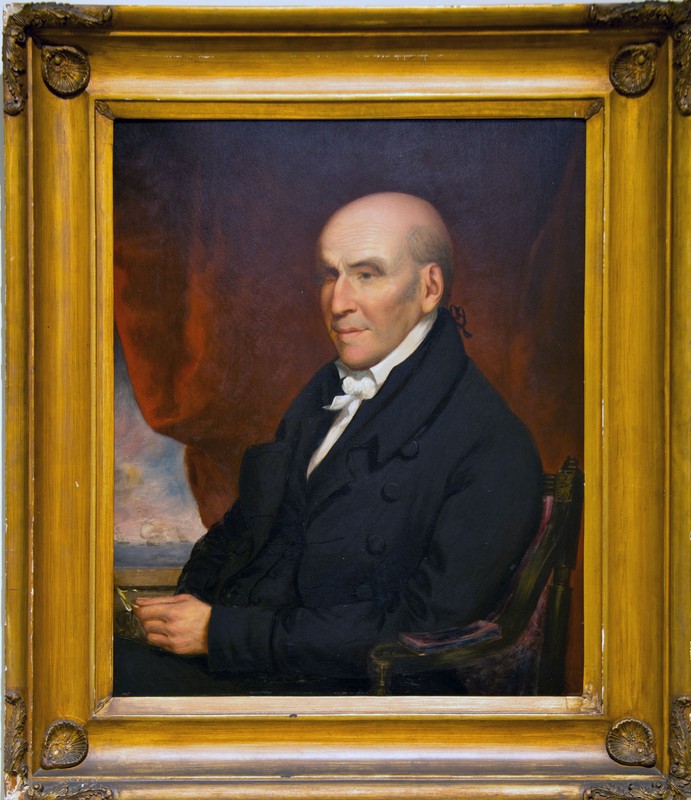
Girard's tomb decorated with plants and flowers in the 1920s.
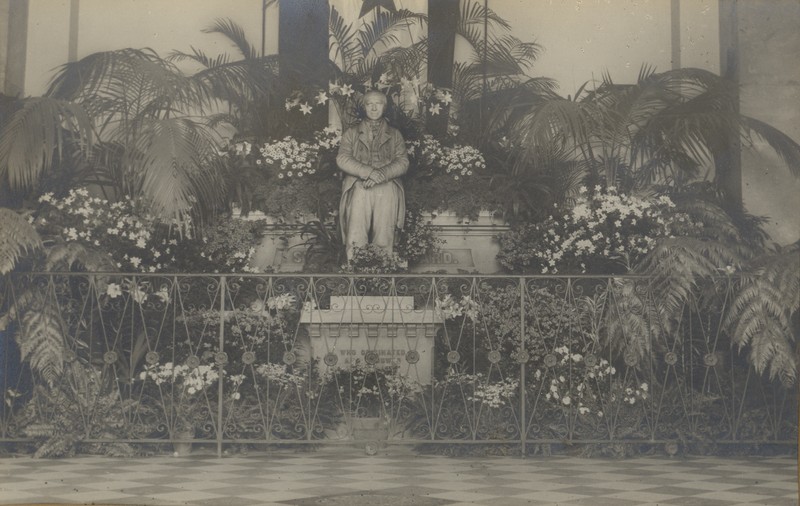
The four men who were Girard College's first Black students returned to the school for the 50th anniversary of its integration in 2018. From left: Theodore Hicks, William Dade, Carl Riley, and Owen Gowans.
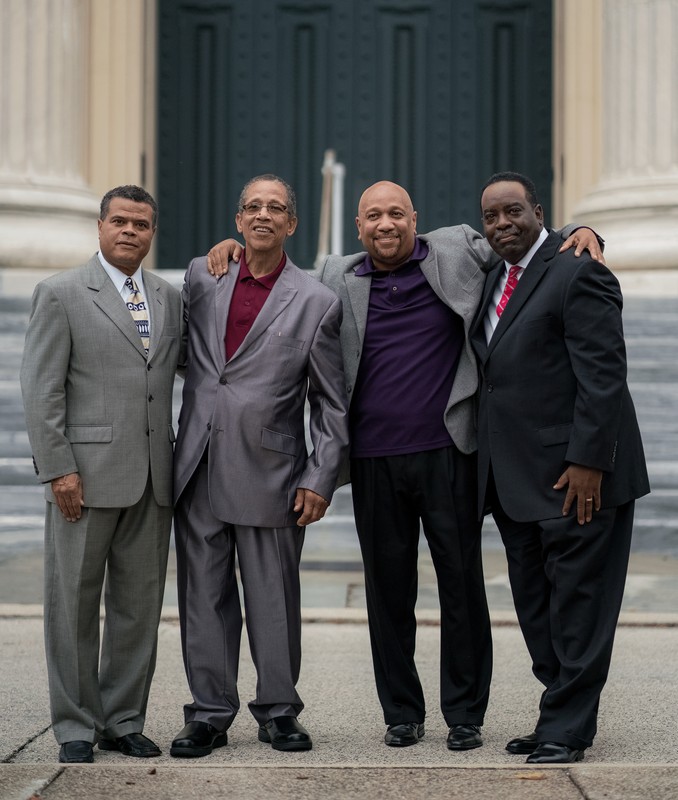
The "Spirit of Girard" was sculpted by Bruno Lucchesi in 2000 and shows Girard with a modern student body. It was decked out in Phillies gear in 2008 following the World Series win.
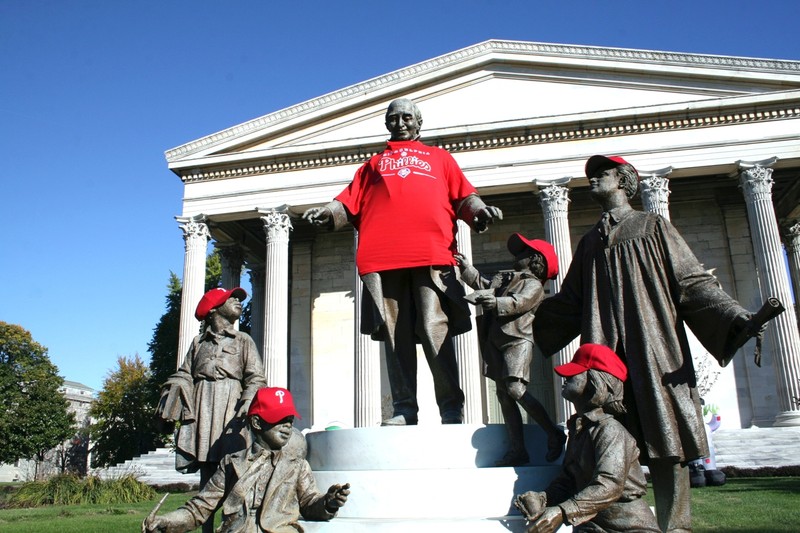
"Stephen Girard" in a carriage with a group of Girard College students during a Founder's Day celebration.
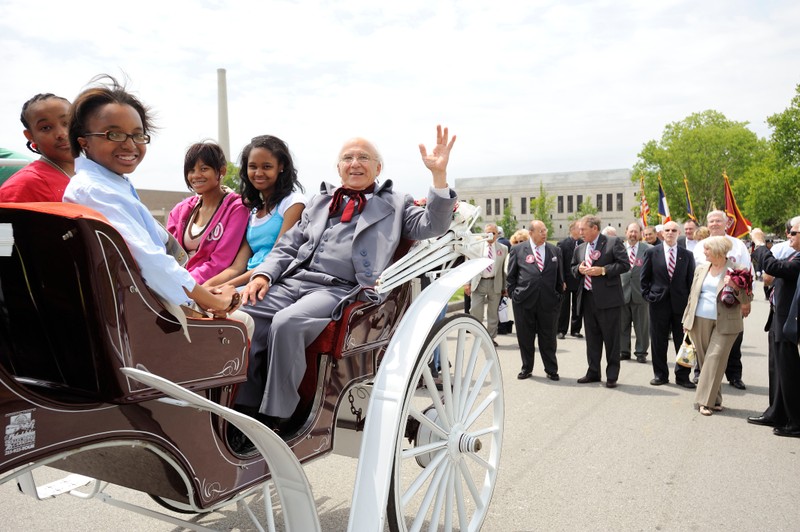
Backstory and Context
Text-to-speech Audio
“It was drilled into my head repeatedly, and I was always amazed that this guy (Stephen Girard) had put away a sum of money (seven million dollars) and that this school has run for over one hundred years on the interest from that money. Because of this, I have always been a saver...” (John Michaluk, GC 1963).
Stephen Girard was born in Bordeaux, France on May 20, 1750, came to Philadelphia in June 1776, and died in his adopted hometown December 26th, 1831. In his honor, all the flags on the port of the Delaware Waterfront were lowered to half-mast. Girard apparently originally wanted to be buried next to his wife, Mary, who was buried at the Pennsylvania Hospital sixteen years earlier, after being committed there for bouts of mental illness. However, by the time he died, the hospital no longer allowed onsite burials. When Girard died, he was buried in the graveyard at Holy Trinity Roman Catholic Church. In 1851, three years after Girard College officially opened, his remains were moved to Founder’s Hall and placed in this marble tomb in the building’s foyer. The tomb is accompanied by a life-size statue of Girard, sculpted by artist Nicolas Gevelot in 1833.
In his will, Girard left the vast majority of his fortune to establish a school for “poor, white, male orphans” and the school has since grown into a diverse, co-ed community of learning. Girard College was desegregated in 1968 after a decades-long struggle led by three generations of Black activists—including daily civil rights protests organized by Cecil B. Moore outside of Girard for 7 months and 17 days in 1965. The first female students were admitted into Girard in 1984. Since these two significant battles, Girard College has grown to educate and house a population of students that are 98% people of color and more than 50% female.
Today, nearly two hundred years since its establishment, Girard College continues to uphold the vision and core values that Stephen Girard had in mind when writing his will: integrity, respect, compassion, responsibility, and courage. Girard continues to admit students in grades 1-12 from families of a single parent or guardian, with limited financial resources. All admitted students receive full scholarships to study and board at Girard.
Sources
Sand, Richard. Laurent, Elizabeth. Girard College—a Living History. New York, NY. Oakley Publishing Inc., 2009.
Wilson, George. Stephen Girard: The Life and Times of America's First Tycoon. PA. Signpost Books, 1995.
Girard College Historical Collection
Girard College Historical Collection
Girard College Historical Collection
Girard College Historical Collection
Girard College Historical Collection
